Asanas to Transform Your Mind, Body, and Spirit
Discover the transformative power of Asanas. Learn how these yoga poses enhance flexibility, strength, and balance, while promoting relaxation and overall well-being.
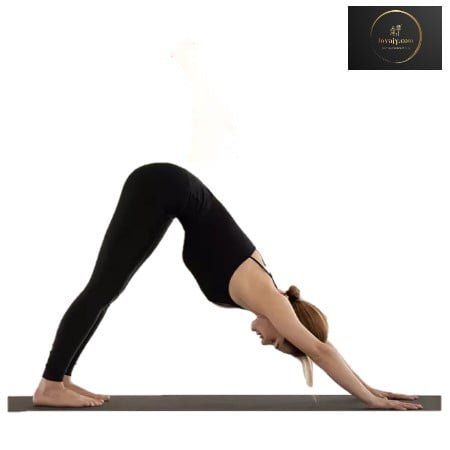
Asanas, or yoga poses, have been practiced for centuries as a profound means of nurturing the mind, body, and spirit. Derived from ancient yogic traditions, these physical postures offer a multitude of benefits, ranging from physical strength and flexibility to mental clarity and emotional well-being. Whether you are a seasoned yogi or a beginner on the path to self-discovery, incorporating asanas into your daily routine can bring about a transformative shift in your overall well-being.
What are Asanas?
Asana is a Sanskrit word meaning “posture,” “seat,” or “place.” Asanas are physical or body postures; originally and still a general term for a sitting meditation pose, and later extended in hatha yoga and modern yoga as exercise, to any type of position, adding reclining, standing, inverted, twisting, and balancing poses. They encompass a wide range of poses, each designed to engage specific muscle groups, enhance flexibility, and promote a state of balance and inner calm. Asanas are aimed to create harmony between the body, breath, and mind.
Also Read: Yoga Quotes
Benefits of Asanas
- Physical Strength and Flexibility: Regular practice of asanas improves muscle strength, endurance, and flexibility. The various poses target different muscle groups, enhancing overall body tone and posture.
- Improved Balance and Coordination: Asanas require concentration and body awareness, leading to improved balance, coordination, and proprioception. By cultivating a strong mind-body connection, you can enhance your ability to move with grace and stability.
- Stress Relief and Relaxation: Asanas serve as a powerful tool for stress management and relaxation. The focused attention on the breath and mindful movement helps reduce stress, anxiety, and tension in the body and mind.
- Increased Energy and Vitality: Certain dynamic asanas, such as Sun Salutations (Surya Namaskar), invigorate the body, boost circulation, and promote a sense of revitalization. Regular practice can enhance energy levels and leave you feeling refreshed and rejuvenated.
- Mental Clarity and Focus: Asanas are not just physical exercises; they also serve as a meditation in motion. The practice encourages mindfulness, concentration, and self-awareness, leading to improved mental clarity, focus, and a calm mind.
- Emotional Well-being: Asanas have a profound impact on emotional well-being. They help release tension, promote the flow of energy, and stimulate the release of endorphins, the “feel-good” hormones. As a result, practicing asanas can enhance mood, reduce symptoms of depression, and cultivate a sense of inner peace and contentment.
The difference between Asanas and other Physical Exercise
The practice of yoga combines stretching, breathing, mindfulness and meditation to improve your health, reduce stress and increase strength and flexibility. It’s less of a workout and more of an exploration into the mind-body connection. It’s a holistic lifestyle that is a mental and spiritual journey rather than a physical challenge.
In contrast, gymnastics and other physical exercise focus on building muscle mass, endurance and stamina through quick repetitions or sets of movement. There is no emphasis on breath work, mindfulness or developing the mind-body connection. Yoga is not a competitive sport like running or weight lifting. It is designed to develop balance, coordination and concentration through controlled movement while embracing non-judgement, kindness and compassion for yourself and others.
Incorporating Asanas into Your Routine
- Start with Beginner-Friendly Poses: If you are new to yoga, begin with beginner-friendly poses such as Mountain Pose (Tadasana), Child’s Pose (Balasana), and Corpse Pose (Savasana). Focus on proper alignment, breathing, and gradually increase the duration and intensity of your practice.
- Seek Guidance from a Qualified Teacher: Consider attending yoga classes or seeking guidance from a qualified yoga teacher. They can provide personalized instruction, ensure correct alignment, and help you progress safely on your yoga journey.
- Establish a Regular Practice: Consistency is key when it comes to reaping the benefits of asanas. Start with a realistic commitment, whether it’s a few minutes each day or a few times a week. As you experience the positive effects, you can gradually increase the duration and intensity of your practice.
- Listen to Your Body: Honor your body’s limitations and listen to its signals. Avoid pushing yourself too hard or practicing through pain. Yoga should be a practice of self-care and self-compassion. Respect your body’s boundaries and make modifications as needed.
- Combine Asanas with Breathwork and Meditation: To deepen your practice, combine asanas with pranayama (breathwork) and meditation. Integrating these practices can enhance the overall benefits, fostering a deeper sense of inner calm and mindfulness.
Getting Started with Basic Yoga Asanas: A Guide for Beginners
Yoga is a beautiful practice that combines physical movement, breathwork, and mindfulness to promote overall well-being. If you’re new to yoga, starting with basic asanas (poses) is a wonderful way to establish a strong foundation for your practice. These beginner-friendly asanas will help you build strength, flexibility, and body awareness. Let’s explore a few essential yoga poses and how to do them correctly:
Tadasana (Mountain Pose):
- Stand upright, keeping a distance of 2 inches between your feet
- Inhale and lift your arms in front, levelling up to your shoulders
- Lock the fingers of both hands together and then slowly rotate your wrist outwards
- Now inhale and lift your hands above the head
- While lifting your arms, also lift your heels off the ground, balancing your entire body weight on your toes
- Be in this position for 20 – 30 seconds or as long as you are comfortable
- Now slowly bring your heels down
- Exhale and release your fingers
- Now draw your arms down and return to the initial position
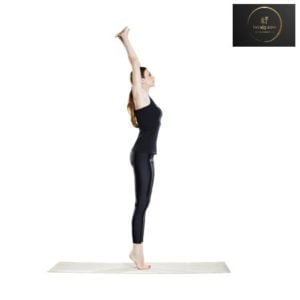 Tadasana Benefits:
Tadasana Benefits:
- improve posture and coordination.
- increases hight.
- relieve sciatic pain.
- improve agility.
- boost circulation.
- tone core muscles.
- strengthen your back, hips, and legs.
Adho Mukha Svanasana (Downward Facing Dog):
- Start on your hands and knees, with your hands slightly ahead of your shoulders and knees hip-width apart.
- Press your palms into the mat, tuck your toes, and lift your knees off the ground.
- Straighten your legs, pushing your heels toward the floor (it’s okay if they don’t touch).
- Lengthen your spine, relax your neck, and gaze towards your navel.
- Breathe deeply, and hold the pose for 5-10 breaths.
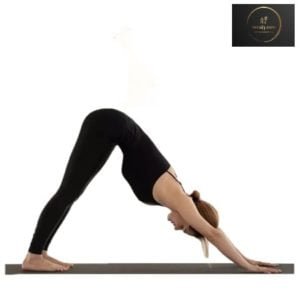 Adho Mukha Svanasana Benefits:
Adho Mukha Svanasana Benefits:
- improves body posture
- opens up your spine and shoulder.
- strengthen your bones.
- improve the blood supply to the brain
Balasana (Child’s Pose):
- Begin on your hands and knees, then sit back on your heels.
- Bring your forehead to rest on the mat and extend your arms in front of you.
- Allow your entire body to relax, feeling a gentle stretch in your lower back.
- Breathe deeply into your belly, and hold the pose for 1-2 minutes.
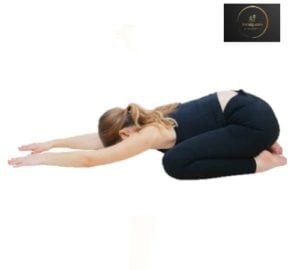 Balasana Benefits:
Balasana Benefits:
- Opening your hips.
- Lengthening your spine.
- Stretching out your ankles.
- Relaxing your back muscles.
- Relieving any tension in your pelvis.
- Increasing blood flow to your head and neck.
- Stimulating your digestive system.
- Potentially relieving constipation.
Virabhadrasana I (Warrior I):
- Stand with your feet hip-width apart and step your left foot back, angling it slightly outwards.
- Bend your right knee, ensuring it is directly above your ankle, and keep your left leg straight.
- Raise your arms overhead, palms facing each other, and lengthen your spine.
- Gaze forward, breathing deeply. Hold the pose for 30 seconds to 1 minute, then switch sides.
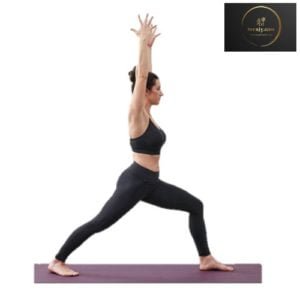 Virabhadrasana I Benefits:
Virabhadrasana I Benefits:
- strengthen the arms, shoulders, and legs.
- maintain balance in the body.
- help people have desk jobs.
- increase stamina.
- increase muscle endurance.
- relieve tension
Setu Bandhasana (Bridge Pose):
- Lie on your back with your knees bent, feet hip-width apart and flat on the mat.
- Place your arms alongside your body, palms facing down.
- Press your feet into the mat, engage your glutes, and lift your hips off the ground.
- Interlace your fingers beneath your back, pressing your arms down for support.
- Breathe deeply, feeling the stretch in your chest, hips, and thighs. Hold for 30 seconds to 1 minute.
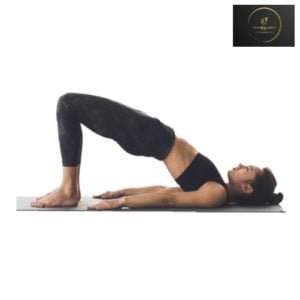 Setu Bandhasana Benefits:
Setu Bandhasana Benefits:
- strengthens the back muscles
- improves circulation of blood
- help reduce stress, anxiety, mild depression, and fatigue
Savasana(Corpse Pose):
- After practicing the other asanas, find a quiet space to lie down on your mat.
- Extend your legs, allowing them to relax completely. Let your feet fall open.
- Place your arms alongside your body, palms facing up, and let your fingers curl naturally.
- Close your eyes gently and soften your facial muscles.
- Release any tension in your body and surrender to the mat, allowing yourself to enter a state of deep relaxation.
- Focus on your breath, allowing it to flow naturally without any effort.
- Stay in Savasana for 5-10 minutes, or longer if desired, soaking in the benefits of complete relaxation.
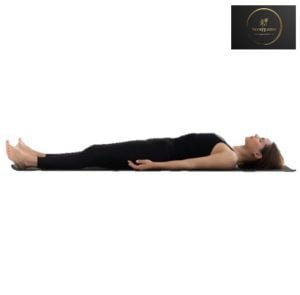 Savasana Benefits:
Savasana Benefits:
- help in managing diabetes, depression, and insomnia
- lower blood pressure
- help decreasing headache
- repair of tissues and cells
- relieve stress and tension
Over to You
Remember, as a beginner, it’s essential to listen to your body and practice with awareness. Start slowly, focus on proper alignment, and avoid pushing yourself beyond your limits. It’s okay to modify the poses to suit your comfort level. If you have any existing health conditions or concerns, consult with a qualified yoga teacher or healthcare professional before beginning your practice.
Incorporating these basic yoga asanas into your routine will help you build strength, flexibility, and body awareness. With consistent practice, you’ll gradually expand your repertoire and explore more advanced poses. Embrace the journey, be patient with yourself, and enjoy the numerous physical and mental benefits that yoga brings to your life. Embrace the wisdom of the ancient yogic tradition and embark on a journey of self-discovery through the power of asanas.

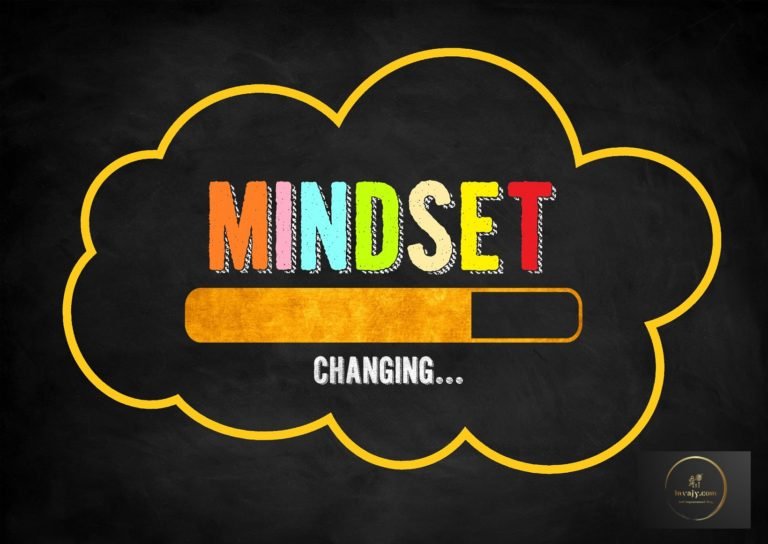




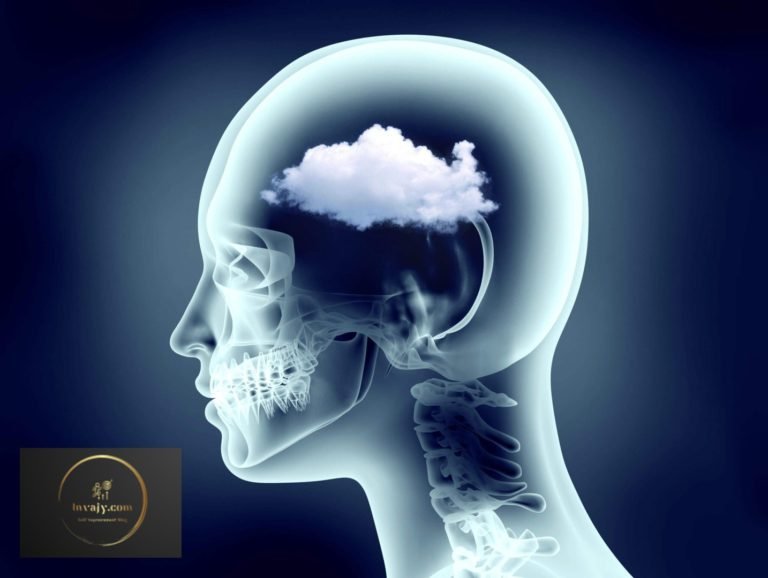
Thanks for the great article on the transformative power of yoga asanas. The tips for incorporating these poses into a daily routine are helpful for beginners. The emphasis on listening to one’s body and seeking guidance from qualified teachers is appreciated. Thank you for sharing this valuable information on the holistic practice of yoga.
fantastic content